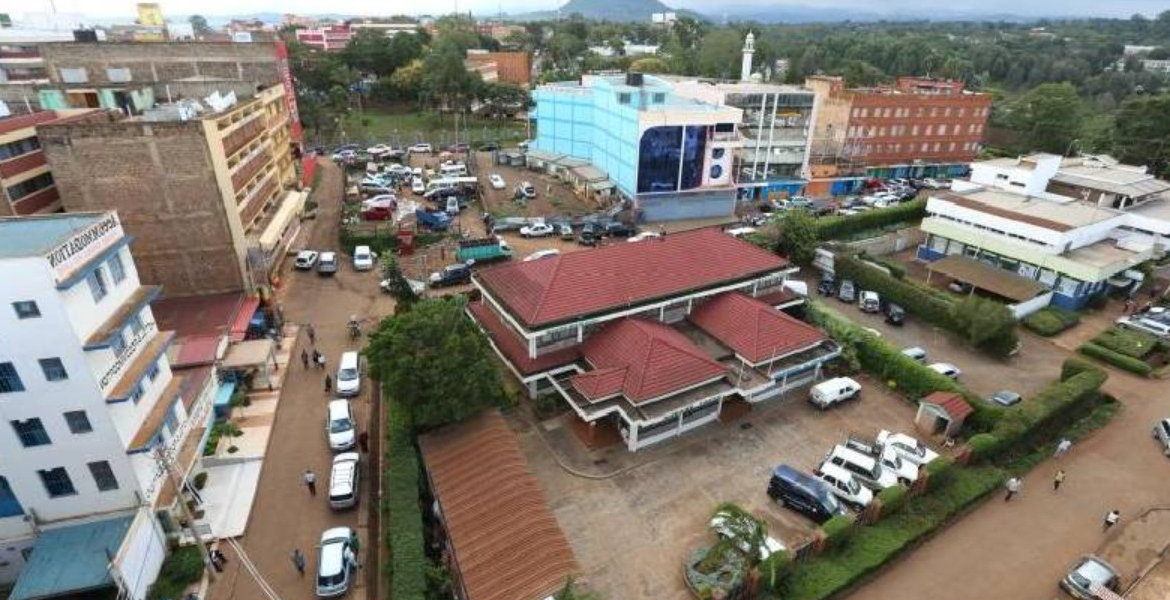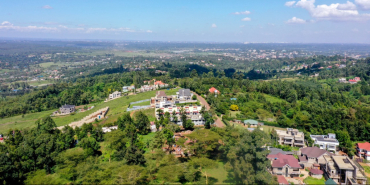Nyeri’s Property Market Thrives as Installment Plans Open Doors for Buyers

Land prices in Nyeri County have continued to rise sharply, with new infrastructure and flexible ownership models driving demand, particularly among younger buyers.
Previously known for its agricultural economy, Nyeri is undergoing significant change. The expansion of road networks, growing population, and proximity to major economic corridors have contributed to increased interest in both residential and commercial developments.
Data from the Kenya National Bureau of Statistics (KNBS) shows that land prices in Nyeri have risen by an average of 12 percent annually between 2020 and 2024. Areas such as Chaka, Mweiga, Naromoru and Ngangarithi have recorded the highest growth, largely due to improved road access and the expansion of Nyeri town into surrounding areas.
A key driver of this growth is the completion of the Mau Mau Road, a KSh 30 billion government-funded project that connects Nyeri to Murang’a, Kiambu, and Nyandarua counties. The road has significantly reduced travel time to Nairobi, making Nyeri more attractive to homebuyers and investors seeking affordable alternatives to the capital.
“The Mau Mau Road has fundamentally changed investor perception,” said George Wamariu, Chief Executive of Famyard Enterprises, a Nyeri-based real estate firm.
“Developers are no longer focusing only on Nairobi or Nakuru. They are now looking at high-potential counties like Nyeri, where infrastructure has unlocked new value.”
As infrastructure improves, land use across the county is shifting. Previously, agricultural areas are being converted into residential estates, commercial centres, and environmentally focused developments. There is also growing demand for student housing, rental units, and short-stay accommodation.
Nyeri’s location near Mount Kenya and the Aberdare Ranges has made it an attractive area for eco-tourism and hospitality investments. New lodges, holiday cottages, and homestays are emerging, adding to the region’s appeal for domestic and international visitors.
However, many young Kenyans continue to face barriers to land ownership. A 2024 report by the Central Bank of Kenya (CBK) found that while 75 percent of Kenyans under 35 want to own property, fewer than 15 percent currently do. The report cited limited access to financing, unclear land-buying procedures, and high upfront costs as major obstacles.
To address this gap, developers such as Famyard Enterprises are introducing flexible ownership options. One of their key offerings allows buyers to purchase land with a deposit as low as KSh 50,000, with the remaining amount paid in instalments over two years.
“This model is a tool for economic inclusion,” said Wamariu. “It is designed for millennials, Gen Z buyers, and Kenyans living abroad. By making the process transparent and accessible, we are helping more people invest in land with confidence.”
Technology is central to this strategy. The firm uses mobile payments, online title verification and digital customer platforms to streamline transactions and reduce the risk of fraud. Buyers receive title deeds upon completing payments, improving trust and transparency in the process.
These changes are already visible across the county. New gated communities are being developed in areas such as King’ong’o, Gatitu, and Nyaribo, driven by demand from young professionals, first-time buyers, and members of the diaspora. Additional infrastructure projects, including the upgrade of local roads and the development of Nyaribo Airstrip, are expected to further support this growth.
For many young Kenyans, owning land remains a key financial goal, offering security and long-term value. Youth now make up approximately 75 percent of the national population, and their involvement is seen as essential to the future of the property sector.
Figures from the Kenya Bankers Association (KBA) show that youth account for over 30 percent of new land purchases in peri-urban areas, a notable increase from five years ago. This trend has been supported by group investments, flexible savings plans, and developers offering youth-specific products.
Meanwhile, remittances from Kenyans abroad continue to boost real estate investment. According to the CBK, remittances totalled USD 4.19 billion (KSh 633 billion) in 2024, with a significant share directed towards property purchases. Many diaspora Kenyans are using flexible payment plans to buy land for retirement, family support, or future development.
David Mwangi, a Kenyan working in Qatar, said: “A few years ago, buying land back home felt out of reach. But the option to pay in instalments gave me the flexibility I needed. I now have a secure investment that connects me to my roots.”
As real estate continues to contribute around 9 percent of Kenya’s GDP, according to KNBS, industry analysts are calling for more policy support to promote inclusion. Expanding access to affordable financing, improving land registry systems, and increasing public awareness are seen as important steps towards sustaining growth while ensuring younger and lower-income buyers are not left out.
Nyeri’s property market is growing rapidly, shaped by infrastructure, digital innovation and a rising generation of investors.








Add new comment